
EXCLUSIVE: 2024 Bajaj Pulsar 150 Launched, Know Onroad Price, New...
- Apr 9, 2024
- Views : 5765

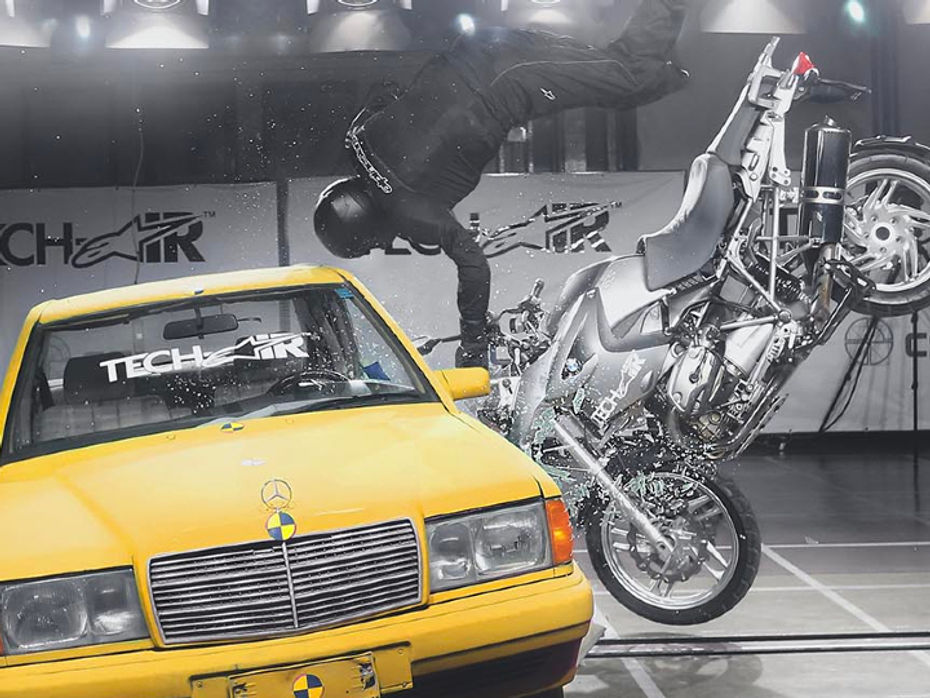
With technology like variable valve actuation and forced induction making their way into the motorcycling world, bikes are getting quicker and more powerful by the day, while simultaneously also becoming lighter thanks to the use of composite materials like carbon-fibre. All this means that it’s easier than ever to put yourself in a situation that you might not make it out of unscathed. Fortunately for us, riding gear is also steadily making technological advancements, with one of the latest being crash-activated airbags.
They were made compulsory in all classes of Grand Prix racing last year, but the technology has been used voluntarily by certain MotoGP riders since 2007. Its roots can be traced back to the turn of the century when Dainese rolled out the first prototype of an airbag shaped around the human body in 2000. So what exactly is the technology and how does it work? Let’s take a look:
BooBoos and Ouchies
There are two main sources of injury in the event of a motorcycle crash: abrasion and impact. Anyone who’s ridden a motorcycle has experienced road rash at some point -- skin getting peeled away when your body rubs along the tarmac at high speeds. This can be prevented (to a certain extent) by wearing gear made from materials like leather and durable textiles that resist tearing and slide along the tarmac rather than catching and yanking.
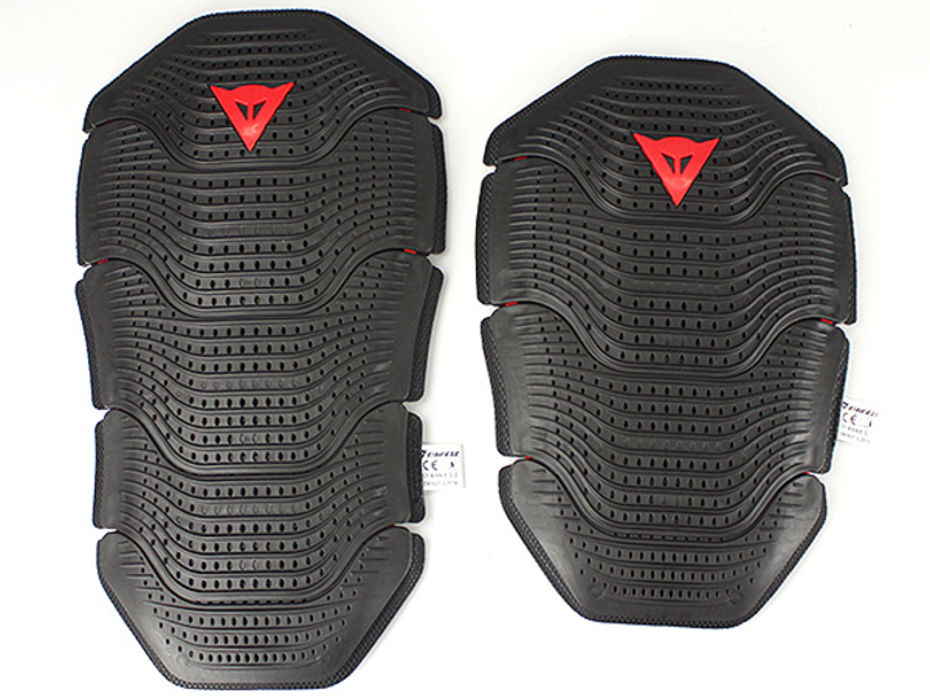
To protect ourselves from impact, our riding gear packs in hard protectors in areas like the back, chest, shoulders, knees, elbows, shins and forearms, to name a few. These protectors are usually made from polymers and designed to absorb and dissipate the energy from an impact.
But sometimes, even this armour may not be enough to protect the rider from a serious impact. Moreover, since (despite the manufacturers’ best efforts) it tends to be somewhat rigid, it can restrict mobility on the bike as well. So, how does one increase the level of impact protection without compromising on mobility? The answer came from the world of cars. Airbags have proved to be a revolutionary safety invention in the world of four-wheelers, saving tens of thousands of lives over the years.
But car crashes and motorcycle accidents are quite different in nature. In the former, you can be quite certain that an occupant will most likely impact against the steering wheel, dashboard and/or side pillars/windows, but in a bike crash, the rider can be thrown anywhere, so placing an airbag on the motorcycle wasn’t a feasible option. It had to be integrated into the riding gear.
Alpinestars and Dainese are two giants in the world of riding gear and each claims it was the first to introduce the integrated airbag system, to the point where they’re embroiled in a massive legal battle against each other. The evidence seems to indicate that Dainese is the pioneer, and a German court upheld a ruling last year stating that Alpinestars’ design had infringed on certain Dainese patents, so for the sake of this article, we’re primarily going to refer to Dainese’s D-air airbag system.
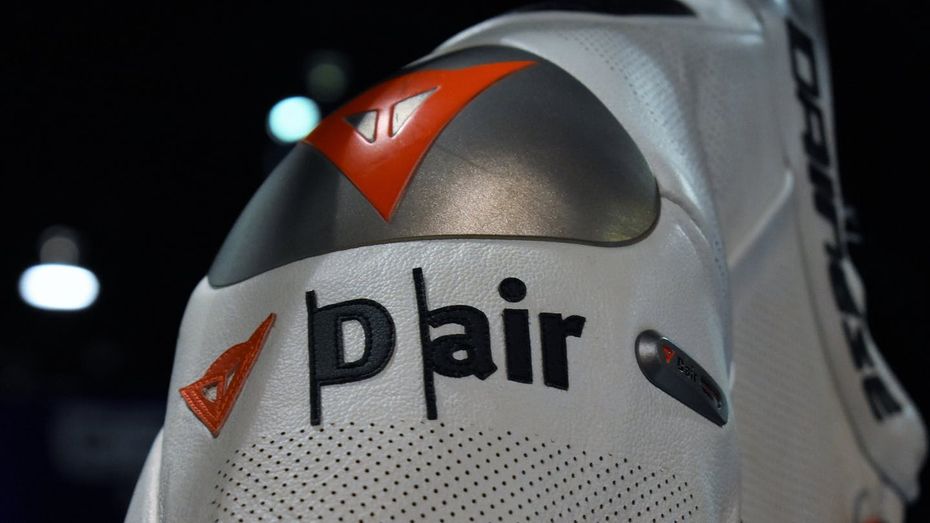
Inception and Innovation

The first obstacle was the design of the airbag itself. It had to seamlessly fit into a racing suit or riding jacket to the point where the wearer couldn’t even tell it was present, while still being able to inflate in an instant and effectively absorb the impact from a crash. If you were to inflate a balloon, seal it and then press down on one end of it, you’d see the opposite end swell up, meaning the pressure that you’re applying to your end is being transmitted to the opposite end. This is highly undesirable in an airbag -- you want the pressure applied at one end to be absorbed and not transmitted to the other end.
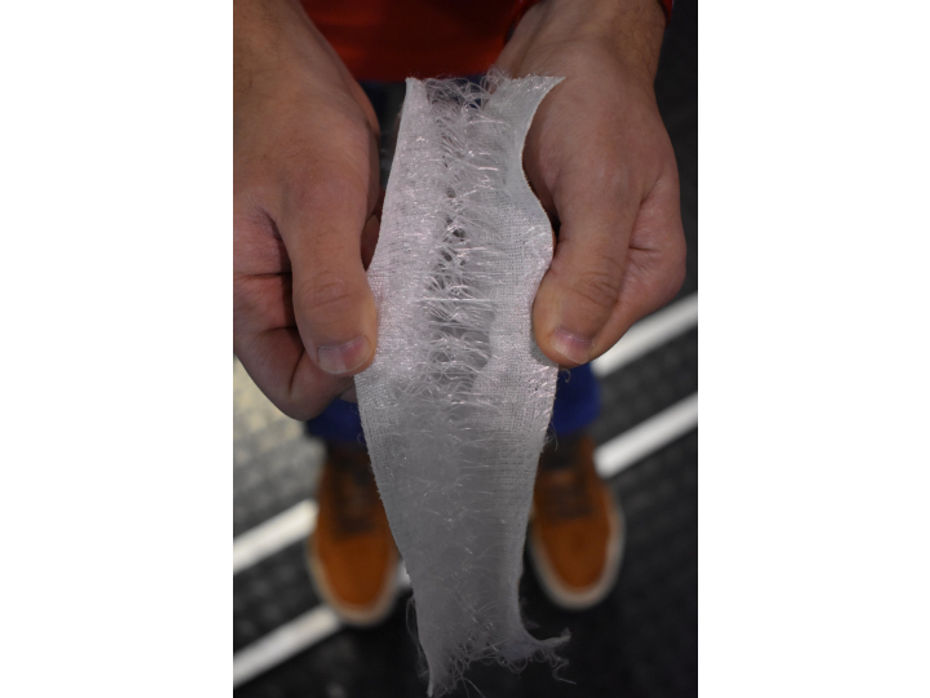
To achieve this, Dainese’s D-air system uses a radical invention called microfilaments - basically millions of tiny filaments linked together on the inside of the airbag which ensure that it inflates uniformly, maintains even pressure across its volume, and effectively absorbs the energy from an impact. There are 35 different patents on the D-air system and over a dozen of these are on the airbag alone.
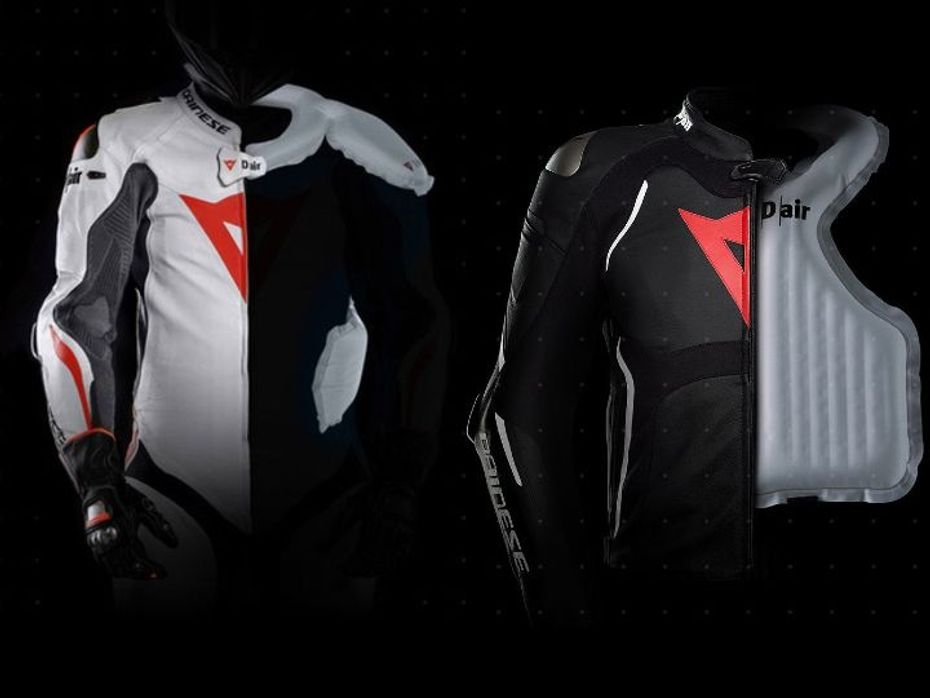
The airbag itself comes in two shapes: a street version used in riding jackets which focuses on protecting the vital organs in the chest, and a track version that focuses more on the collarbone and lower rib cage regions. Both designs cover the central back as well.
Fill ‘Er Up
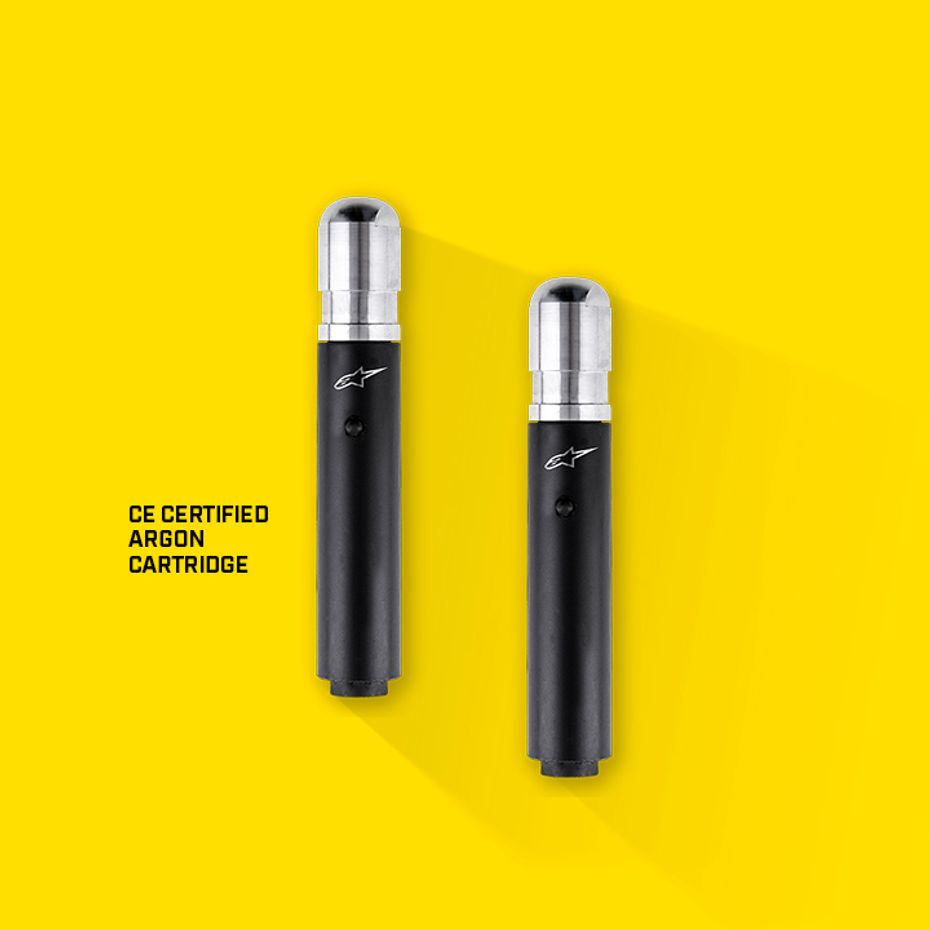
The next step is inflation. It might be called an airbag but it isn’t actually filled with air. Gas cartridges containing either CO2 or argon are used to fill the airbags. But how does it know when to inflate? Well, the brain of the airbag system is an electronic control unit that uses three gyroscopes, three accelerometers, and GPS to keep track of the rider’s orientation and acceleration. These sensors are monitored 1,000 times EVERY SECOND, and when it detects that a rider is falling to the ground in case of a lowside or being thrown up in the air in case of a highside, the control unit sends a signal to the cartridge and the airbag inflates.
The time required for it to fully inflate is around 25 to 45 milliseconds, and if you’re wondering whether that’s quick enough, it’s literally quicker than the blink of an eye. Four times quicker, actually. That’s great in theory, but to see the system in action is something else. Check out the spectacular slow-motion footage below, courtesy of the MotoGP YouTube channel. The little ‘explosion’ under Marquez’s suit in the lower back region at the 22-second mark is his airbag being inflated, before he’s even lost contact with the bike. (You'll have to head over to YouTube to watch the video, and while you're there don't forget to check out the ZigWheels channel here for the latest news, reviews and fun feature films)
Fool-proof
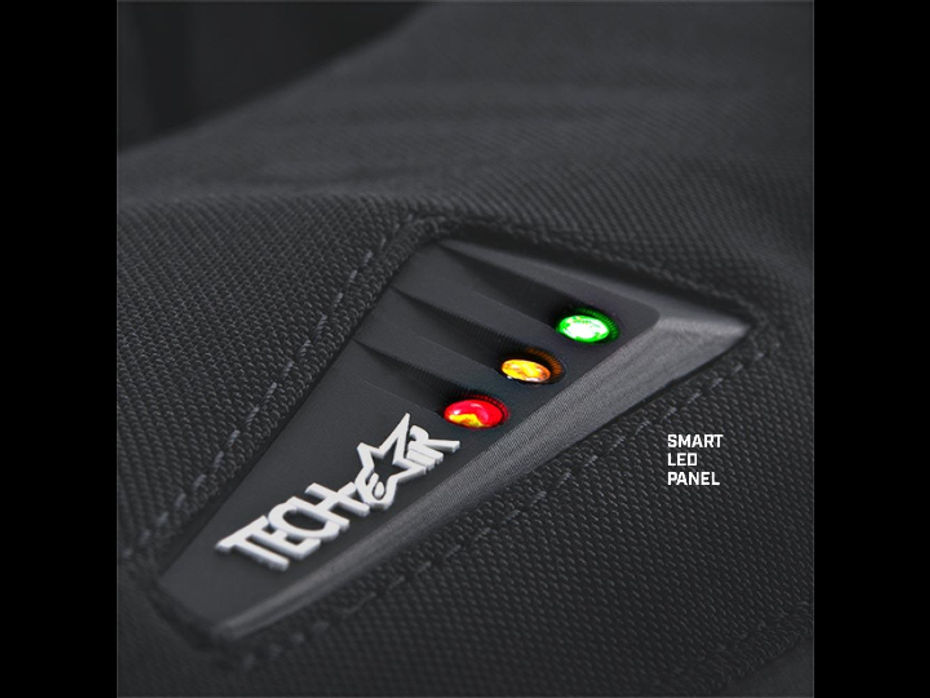
The electronic control unit is powered by a lithium-ion battery housed in the suit-jacket itself. In the case of the track airbag system, the battery lasts about five hours and requires two hours to fully charge, which should cover you for one full track day. The street airbag system is a lot more practical, with a battery life of 24 hours and the same two hour charging time. Another difference between the two systems is the activation speed: the track airbag will only inflate for crashes above 50kmph, while the street airbag is active from 10kmph onwards. Thanks to the array of sensors on-board, the control unit is smart enough to distinguish a genuine crash from the jacket falling out of your hands at home.
Are They Any Good?
So, the airbag wraps around all the important areas, the system smartly detects crashes and inflates the airbag quicker than the blink of an eye. Great! But is it any good at protection? Well, based on their performance, the hard protectors we mentioned earlier may receive a CE level 1 or 2 certification, where a level 1 protector allows 35 kilonewtons of force to transmit through and level 2 unit allows 20 kilonewtons of force to transmit through when a 5 kg weight of a particular shape and size is dropped on it. And airbags? They allow 2 kilonewtons of force to be transmitted through when subjected to the same test. This means that they’re 90 per cent more effective than even CE level 2 protectors.
I Want One!

As with most riding gear technology, it starts on the track and eventually ends up in consumers’ hands. Airbags are no exception, and you can go out today and buy either a racing suit or a street jacket equipped with an integrated airbag system. It won’t come cheap, though. The systems are only present on top-of-the-line racing suits like the Dainese Mugello and Misano which start at $2,500 (around Rs 1.89 lakh). The Alpinestars options like the GP Tech V2 and Missile suits are slightly more affordable, beginning at $1,000 (around Rs 75,500). Both brands also offer street jackets equipped with integrated airbag systems which start at around $600 (Rs 45,300).

Another option that’s gaining popularity at the moment is the universal airbag vest which can be worn under any street jacket to increase the level of impact protection. In addition to the big brand’s mentioned above, these vests are also available from other manufacturers like Spidi and Ixon, and tend to be more affordable than integrated airbag jackets.
It’s not just the purchasing that’s expensive. The suits and jackets contain either one or two single-use gas cartridges depending on the model, and if you do have a crash where the airbag inflates and the cartridge needs to be replaced, 229 of your Euros (Rs 19,200) will end up in Dainese’s pockets for a jacket and €299 (Rs 25,000) for a suit.
As with any technology in its infancy, as material science and manufacturing techniques evolve, prices can be expected to reduce with time.

EXCLUSIVE: 2024 Bajaj Pulsar 150 Launched, Know Onroad Price, New...

Ather Rizta vs Ola S1 Air vs Bajaj Chetak vs TVS iQube :...

All-New Bajaj Pulsar NS400 Launch Confirmed: May 3, 2024

Ather Rizta’s Underseat Storage Revealed In New Teaser

Ather Rizta Launch On April 6: From Expected Price To Range...

Weekly Bike News Wrap-up: Bajaj Pulsar N125 And N250 Spied, Ather...

BREAKING: Ather Rizta Pre-Bookings Begin

Ather Rizta Launch Tomorrow: Know Expected Price, Range, Features And...

BREAKING: Ather Rizta Launched In India At Rs 1.10 Lakh
India's largest automotive community